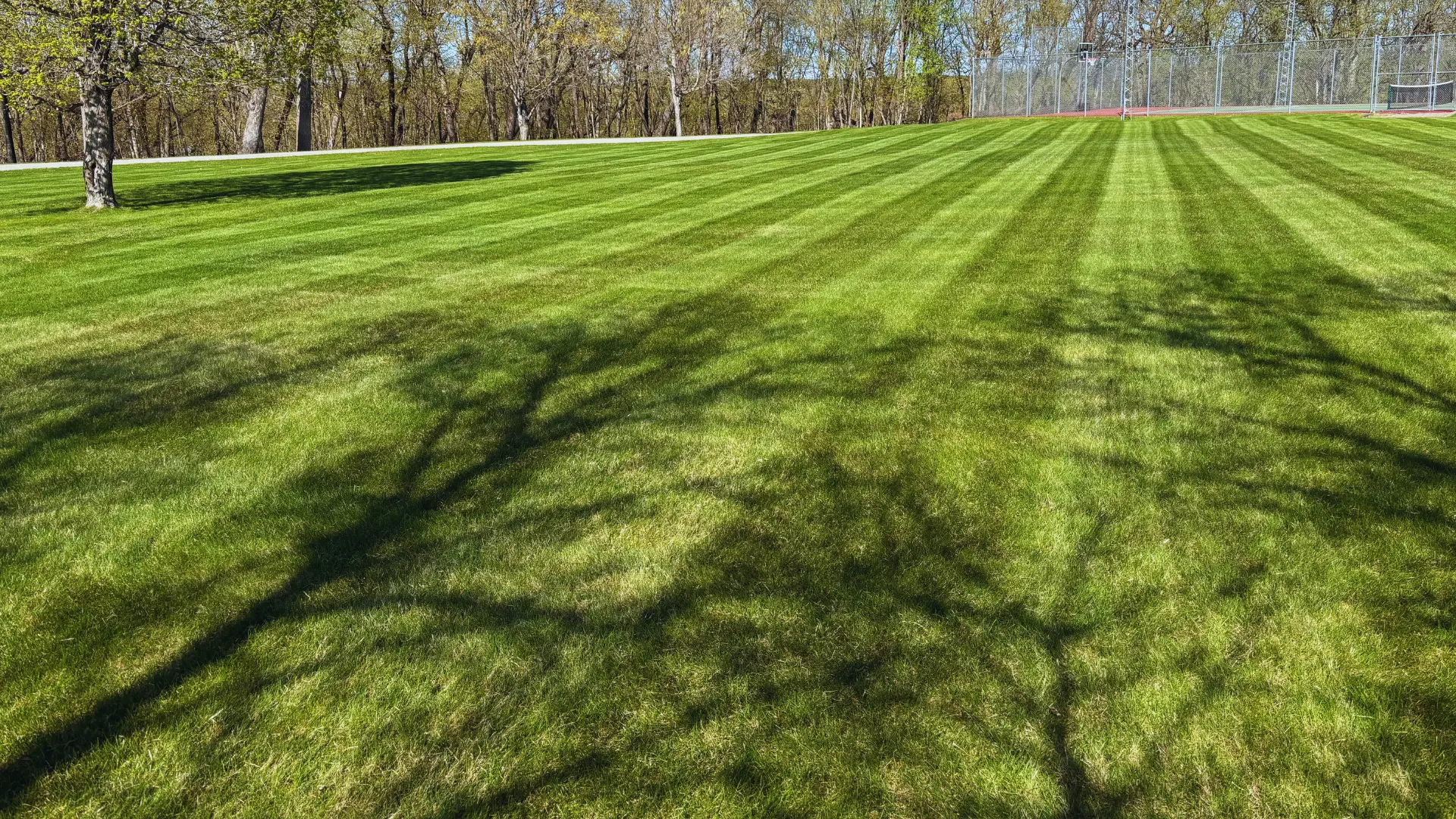As the crisp autumn air arrives here in Northwest Minnesota, it’s tempting to think the lawn care season is over. The frantic growth of summer slows, and many homeowners believe they can save a little by skipping that final lawn application.
However, at Miller Yard Care, we want to let you in on a professional secret. We don't think of the fall treatment as the "last" application of the year. We consider it the first, and most important, application for next year's lawn.
This single treatment is what truly sets the stage for success. Based on decades of research from experts at Purdue University, the University of Minnesota Extension, and other leading institutions, this application performs three critical jobs that guarantee a healthier lawn next spring.
1. The Winter Feast: Building Energy and Disease Resistance
While the top growth of your grass is slowing down, the roots are working overtime. Fall is when cool-season grasses are actively storing energy and developing their root systems for winter.
-
Promotes Root Growth and Energy Storage: The specialized, slow-release fertilizer we use is designed to be absorbed by the plant and stored as energy reserves in the root system. This is the single most important factor for winter survival and a quick spring green-up. Instead of forcing vulnerable top growth, we are building a stronger foundation underground.
-
Improves Turf Density: A key benefit of fall fertilization, highlighted by Purdue, is that it enhances turf density. This means the lawn becomes thicker, creating a tighter weave of healthy grass plants.
-
Reduces Spring Diseases: That increased density and stored energy directly lead to another huge advantage: improved tolerance to spring diseases. A well-fed lawn is stronger and better equipped to fend off common spring issues like Red Thread and Pink Patch.
2. The Knockout Punch: The Best Time to Eliminate Weeds
If you have persistent broadleaf weeds like Creeping Charlie, plantain, wild violet, and dandelion, fall is the absolute best time to control them.
-
Working with Nature: As the University of Wisconsin-Madison's Division of Extension explains, in the fall, perennial plants are translocating energy downward from their leaves to their roots to prepare for winter dormancy.
-
A Complete Kill: When we apply a broadleaf herbicide now, a plant carries the product down with its natural energy flow, right into the root system. This results in a much more complete and permanent kill, preventing them from returning next spring.
3. The Ultimate Defense: Preventing Next Year's Problems
A thick, healthy lawn is its own best defense. By combining fertilization and weed control now, we are setting up a multi-layered defense for next season.
-
Choking Out Weeds: The enhanced density from the fall fertilizer creates a thick canopy that leaves less room for new weed seeds to find sunlight and soil next spring.
-
An Early Barrier for Crabgrass: The specialized pre-emergent herbicide we apply in the fall creates a protective barrier in the soil. This provides a crucial first line of defense against the earliest germinating crabgrass next spring, weeks before a spring treatment would even be possible.
Your First Step to a Great Lawn Next Year
So, instead of seeing this as the end of the season, think of it as giving your lawn a powerful head start. You're not just finishing this year strong; you're making the first and most critical investment for a beautiful, healthy lawn next year.
Don't skip the step that matters most. If you have any questions about our fall application, please don't hesitate to reach out.


Comments (0)
Sorry! The comments have been closed.